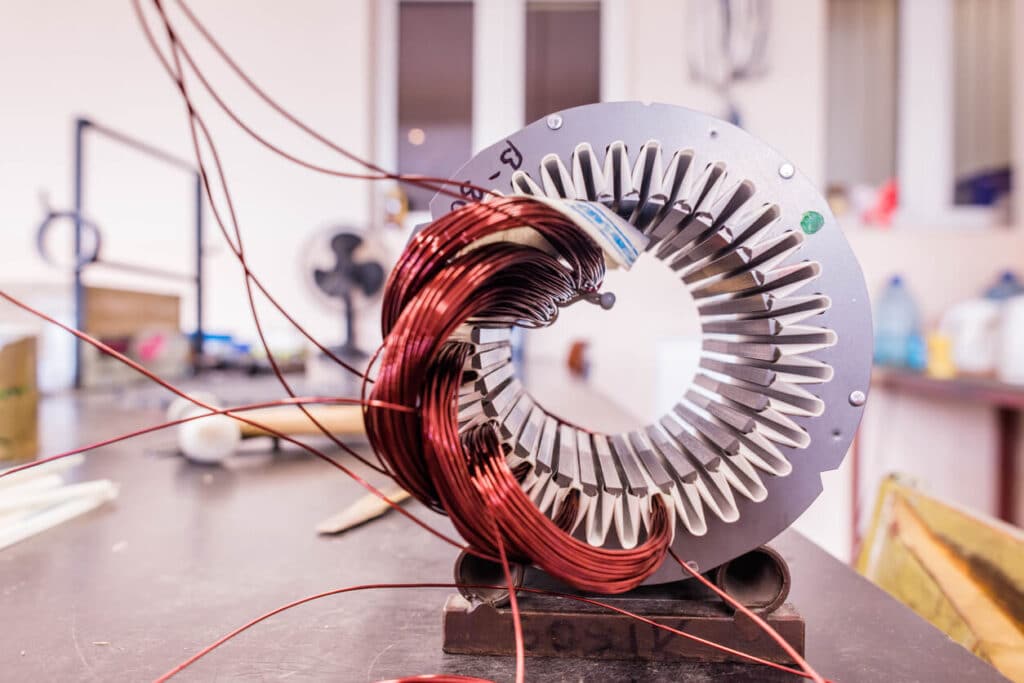A boiler tender, and his family, won millions of dollars in settlement money after a successful lawsuit, handled by Weitz & Luxenberg attorneys.
Diagnosed with Mesothelioma from Exposure to Asbestos
Our client, a veteran, was diagnosed with mesothelioma in August 2019. Mesothelioma is a lethal form of cancer caused by exposure to asbestos. The primary route of is through breathing in dust laced with asbestos fibers.
Mesothelioma is incurable; most people diagnosed with the disease die within 18 months. The disease can develop long after exposure, in some cases up to 40 years later.
Winning Asbestos Cases for Our Clients
When W&L attorney Alex Eiden took on this case, he knew it would be complex and involve many defendants. Yet, he did not shy away from the fight. Mr. Eiden explains, “I believed our client deserved justice. These companies had shown an extraordinary level of callousness and disregard for his health and safety. I am committed to my client’s cause and was eager for the fight.”
He emphasizes, “This success of this case was ongoing proof that we can help a regular guy win a lawsuit against large multinational corporations. Big companies cold-heartedly focused on their bottom lines and not on the health of the people who have to work with their products. W&L is always ready to help those who are vulnerable, who cannot always help themselves, in the pursuit of justice.”
Asbestos Exposure at the Philadelphia Naval Shipyard
Our client suffered occupational exposure to asbestos over many years. He was breathing in asbestos fibers in the air in his work environment. This dust was often created as he performed his job tasks.
As a tradesman, our client unknowingly used products containing asbestos while he worked. First, as a mechanic in the U.S. Army. Then later, during his long career as a boiler tender at the Philadelphia Naval Shipyard (PNSY). His occupational exposure to asbestos continued while he worked there, for roughly 15 years.
During his time in the army, our client worked on earth-moving equipment such as dozers, scrappers, graders, ten-ton tractors, pickup trucks, and jeeps. He frequently worked on vehicle brake systems. This involved installation, blowing out, and sanding.
At PNSY, he removed and installed boilers on ships, performed grinding and cutting, and cut block insulation and brick. He also rebuilt boilers and repaired or replaced burner gaskets. Our client also worked on economizers, refractory, hand hole and door gaskets, soot blowers, interbottom gaskets, and manhole gaskets.
While at PNSY, our client did packing, fixed valves, and mixed insulation cement. He worked with — or close to — a variety of pumps, valves, turbines, and force draft blowers. All the while, breathing in the dust that would lead to his mesothelioma diagnosis years later.
Asbestos on Navy Ships
The majority of our client’s work was done onboard ships docked at PNSY. U.S. naval ships have parts and machinery containing asbestos.
Over the years, our client worked on numerous such ships, including the: (1)
- USS Belknap (CG 26) — A guided missel cruiser (1964-1995), she was the first ship to carry an SH-2 helicopter on deployment. Her propulsion system consisted of four 1200 psi boilers and two electric geared turbines.
- USS Constellation (CV 64) — Originally an attack aircraft carrier, she was redesignated as a multipurpose aircraft carrier (1961-2003). Her propulsion system was eight steam boilers with four steam turbine engines.
- USS Detroit (AOE 4) — A fast combat support ship (1970-2005), the Detroit had four V2M 600 PSI propulsion boilers.
- USS Farragut (DDG 37) — Reclassified twice (1956 and 1975), the ship was the fourth navy vessel with this name (1960-1989). Her propulsion consisted of four 1200 psi boilers and two geared turbines.
- USS Forrestal (CV 59) — The first supercarrier in the world (1955-1993), she was an attack aircraft carrier. She later was redesignated as a multipurpose aircraft carrier and had a propulsion system consisting of eight boilers.
- USS Garcia (FF 1040) — A destroyer escort, she was redesignated in 1975 (1964-1989). Her propulsion system consisted of two boilers, one geared turbine, 35,000 shaft horsepower, and one shaft.
- USS Guam (LPH 9) — An amphibious assault ship (1965-1998), she was christened in commemoration of the World War II battle for the island of Guam. She had a propulsion system of two boilers, one geared steam turbine, and one shaft.
- USS Independence (CV 62) — Originally an attack aircraft carrier, she was redesignated as a multipurpose aircraft carrier (1959-1998). Her propulsion system included eight boilers.
- USS Iwo Jima (LPH 2) — She was the first ship to be designed and built as an amphibious assault ship (1961-1993). Her propulsion system included two boilers, one geared steam turbine, and one shaft.
- USS JFK (CV 67) — The last conventionally powered aircraft carrier built by the navy, she was originally an attack aircraft carrier and later redesignated as a multipurpose aircraft carrier (1968-2007). Her propulsion system was eight boilers.
- USS Kitty Hawk (CV 63) — The lead ship in the second class of supercarriers, she was an attack aircraft carrier. She was then redesignated as a multipurpose aircraft carrier (1961-2009), with a propulsion system of eight steam boilers.
- USS LaSalle (AGF 3) — In the class of amphibious transport docks, she was a miscellaneous command ship (1972) and later a flagship (1964-2005). Her propulsion system was steam turbines with two boilers.
- USS Lawrence (DDG 4) — The ship was a guided missile destroyer (1962-1990). She had a propulsion system of 1200 psi boilers and two geared turbines.
- USS Mahan (DDG 42) — First a guided missile frigate, this ship was then a guided missile destroyer (1960-1993). She had a propulsion system of four 1200 psi boilers and two geared turbines.
- USS McCandless (FF 1084) — In the Knox class of frigates, the ship was used for reserve training (1972-1994). Her propulsion system consisted of two 1200 psi boilers, one geared turbine, and one shaft.
- USS Saratoga (CV 60) — An attack aircraft carrier, the ship was redesignated as a multipurpose aircraft carrier in 1972 (1956-1994). Her propulsion system consisted of eight boilers.
- USS Stormes (DD 780) — She was a navy destroyer (1945-1970). Her propulsion system was made up of four boilers and electric geared turbines.
- USS Zellars (DD 777) — This Sumner class destroyer lost 40 men, killed in action in 1945 (1944-1971). She was powered by electric turbines. (2)
Settlement with Manufacturers After Mesothelioma Diagnosis
The settlement involved more than 20 different manufacturers of products containing asbestos. These companies were aware of the potential for exposure to asbestos, yet did not warn workers or customers.
Among these big-named manufacturing and supply companies there were: an engineering and construction services company; an insurance carrier; and a broadcasting and electronics company.
Settlements were received from manufacturers of these items, among others:
- Brakes
- Insulation.
- Pumps.
- Control and pressure relief valves.
- Air handling equipment.
- Ship equipment.
- Fittings, and industrial castings.
- Steam conditioning equipment.
- Electrical power and fuel control systems.
- Turbines and force draft blowers.
- Industrial machine and pneumatic tools.
- Industrial dust masks and safety equipment.
- Abrasives and metal working tools for grinding and cutting.
- Materials that withstand extremely high temperatures.
W&L is proud of our record of winning more than $8.5 billion in verdicts and settlements for their pain and suffering for our clients exposed to asbestos.


